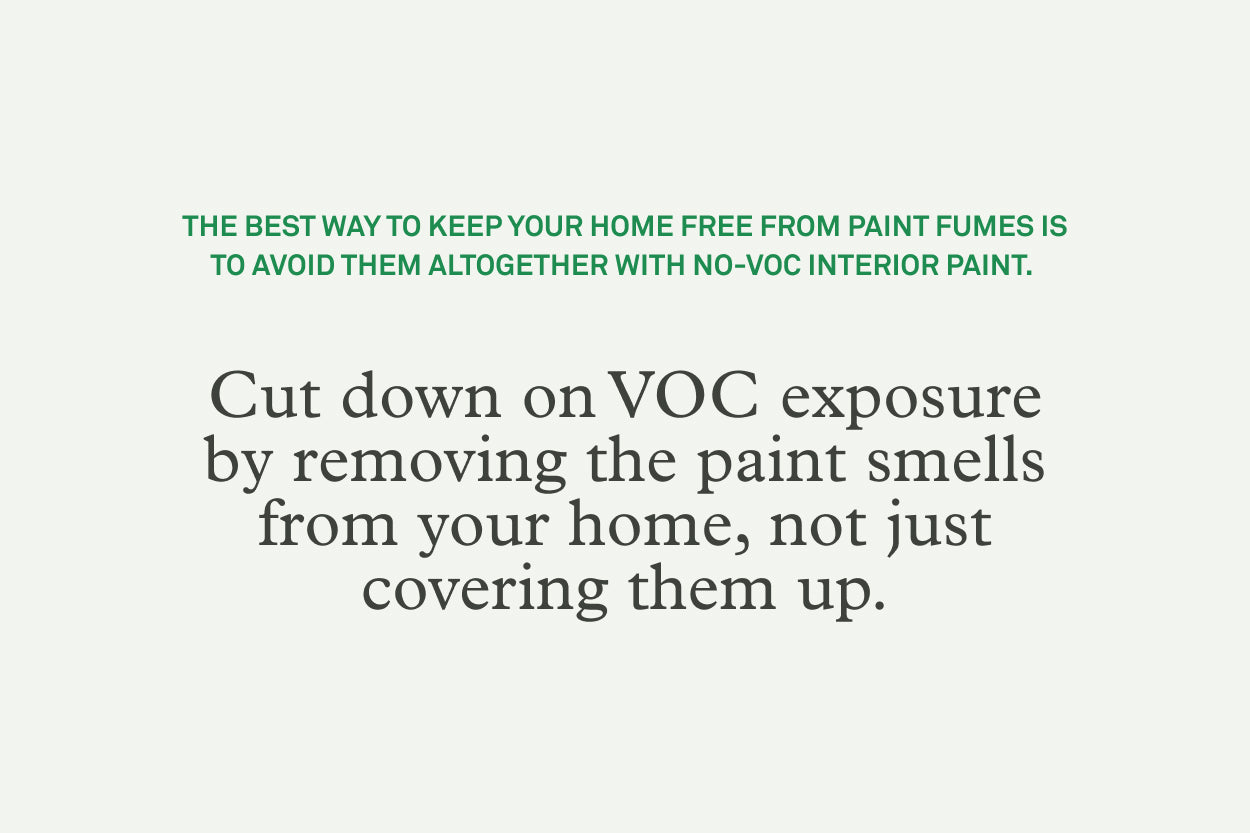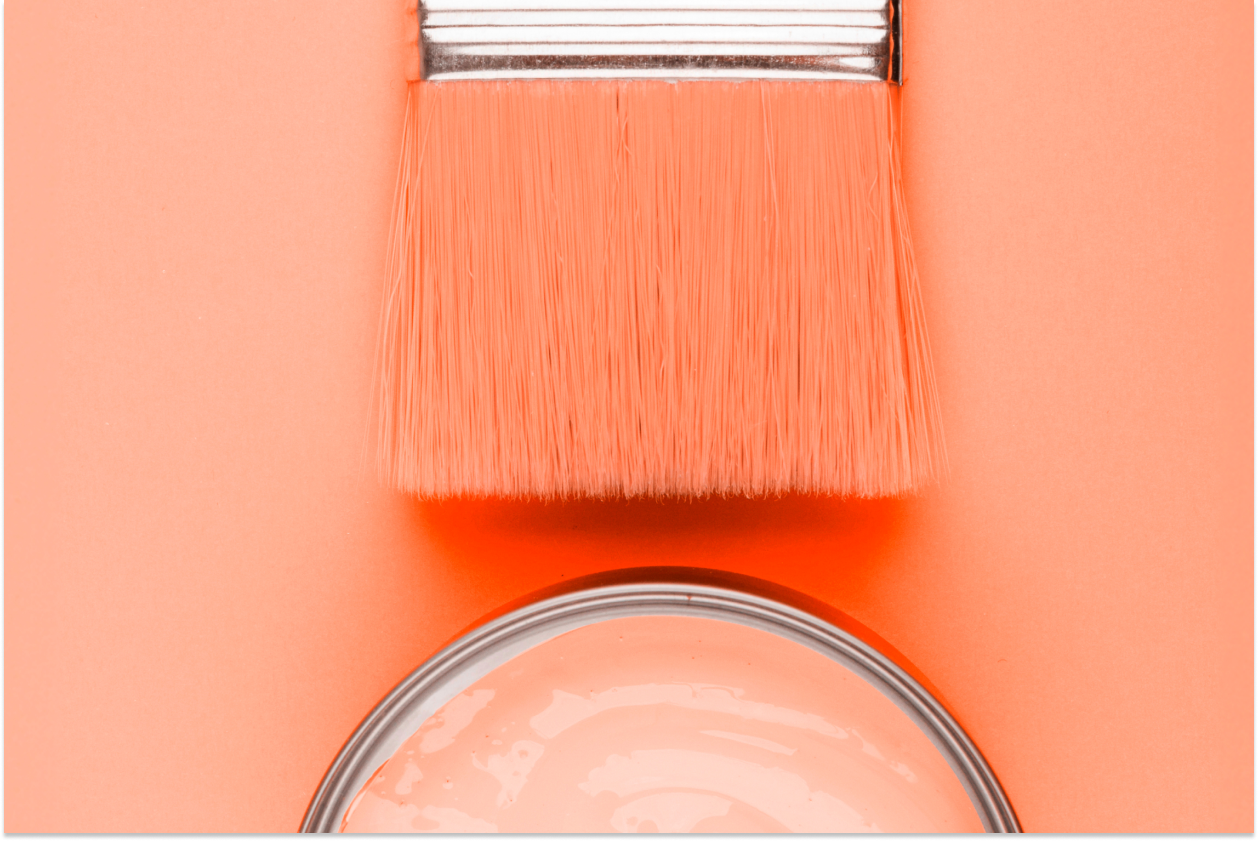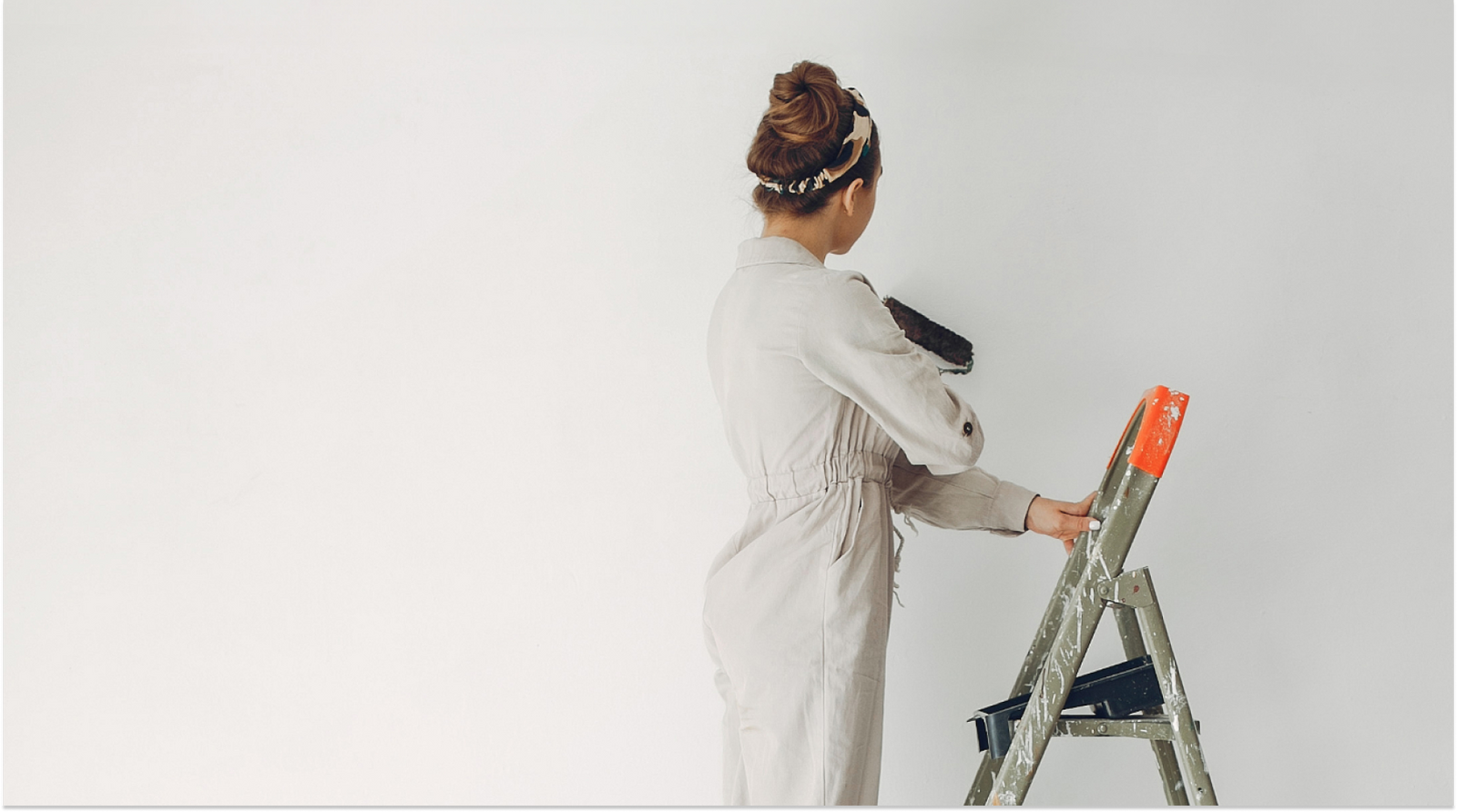Paint fumes are one of those controversial odors — some people love the smell of a freshly painted room, and others can’t get rid of the odor fast enough. No matter which party you fall into, inhaling paint fumes can be harmful, and it’s a good idea to remove paint smells from your home as quickly as possible.

The smell of paint is caused by a group of chemicals called volatile organic compounds (VOCs) that evaporate quickly at room temperature. Exposure to VOCs has been linked to short- and long-term health effects, including:
- Headaches
- Nausea
- Dizziness
- Trouble breathing
- Eye, nose, and throat irritation
- Liver, kidney, and central nervous system damage
- Some types of cancer

The best way to keep your home free from paint fumes is to avoid them altogether with no-VOC interior paint. If you’re using another kind of paint, your goal should be to cut down on VOC exposure by removing the paint smells from your home, not just covering them up. These tips can help.
7 Tools for removing paint smells from your home
- Baking soda.
There’s a reason baking soda is the number-one recommendation for all-natural odor relief — it really works. Baking soda (sodium bicarbonate) molecules bond with smell-causing VOCs, removing them from the air to neutralize bad smells. Try placing several shallow bowls of baking soda around a freshly painted room to help absorb odors.
- White vinegar.
White vinegar is chock-full of acetic acid molecules just waiting to bond to VOCs in the air. To remove paint smells, simmer vinegar in a pot for about an hour so some of the liquid can evaporate and fill the room. The smell of vinegar may not be much better than paint fumes, but it won’t stick around for long. As the acid molecules bond with VOCs from the paint, both odors will be neutralized.
- Coffee grounds.
After you brew your morning pot of coffee, you can dry the grounds on a paper-towel-lined plate and put it in the newly painted room to help remove odors. Like baking soda, coffee grounds have plenty of surface area to bond with VOCs in the air. Plus, caffeine makes coffee high in nitrogen, which may amp up its odor-absorbing abilities even more.
- Water with lemon.
Water is known as the “universal solvent” because it’s quick to react with other chemicals, including odor-causing VOCs. (That’s why an uncovered cup of water can start tasting funny after sitting out for a while.) To use water’s absorbing powers to get rid of paint smells, place several large bowls of water throughout the painted room. For an extra scent boost, try adding fresh lemon slices to each bowl.
- Activated charcoal.
Activated charcoal, also called activated carbon, removes odors from the air through a process called adsorption. When VOCs in the air come into contact with activated charcoal, they get stuck on its surface, out of your nose’s reach. You can find activated charcoal in pellets, bricks, sachets, and some air filters.
- Ventilation.
Ventilation is key for airing out a room after painting. Use exhaust fans to vent paint fumes outdoors and, if the outdoor air quality is good, open windows to bring in fresh air. Fans and your HVAC system can also help circulate air within your home and keep VOCs from building up in one space.
- Air purifiers.
An air purifier with an activated carbon filter, like Molekule Air Pro or Air Mini+, can also help you remove paint smells by trapping odor-causing VOCs. Molekule air purifiers go even further, with a true-HEPA filter that captures 99.97% of airborne particles and PECO technology that breaks down organic pollutants (like VOCs) to destroy them at the molecular level. Learn more.
For a firsthand account of how the Air Mini+ helped someone eliminate fresh paint odors, check out this review on Catster.








